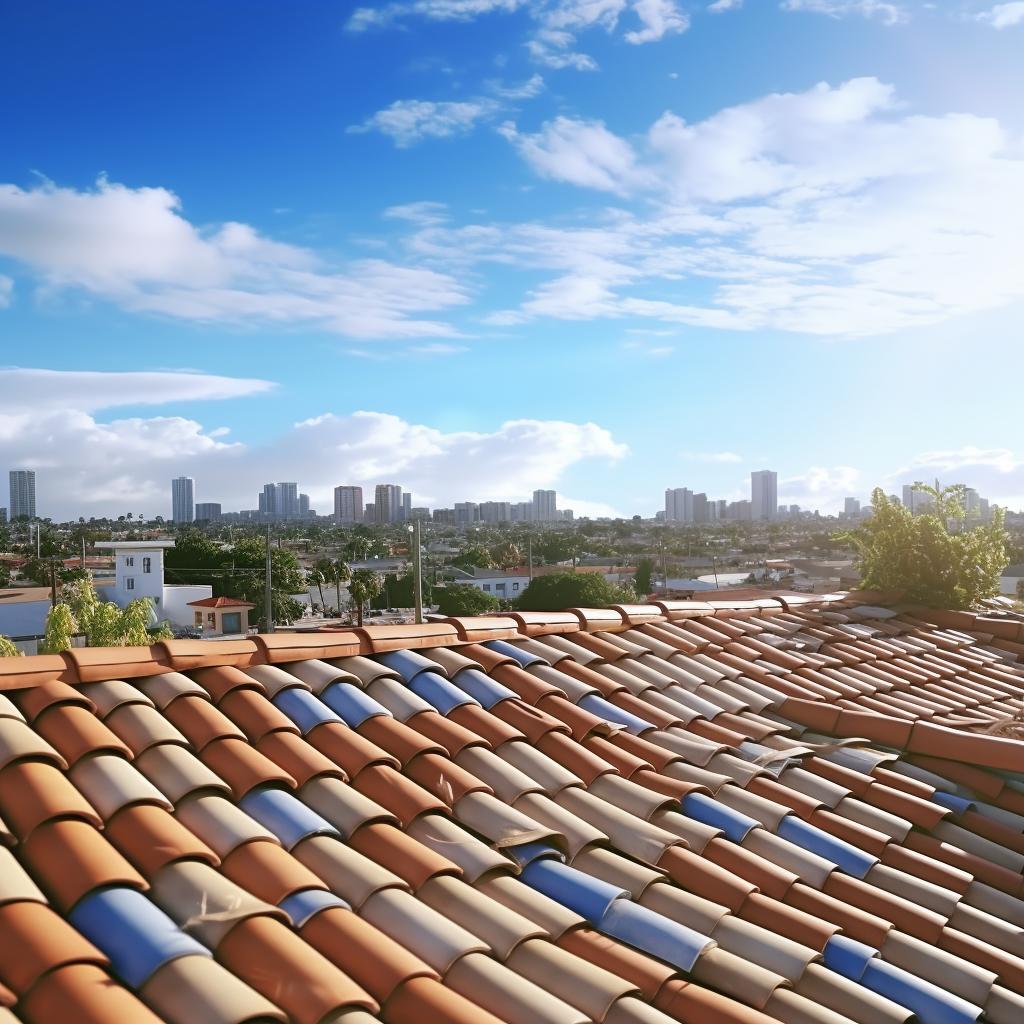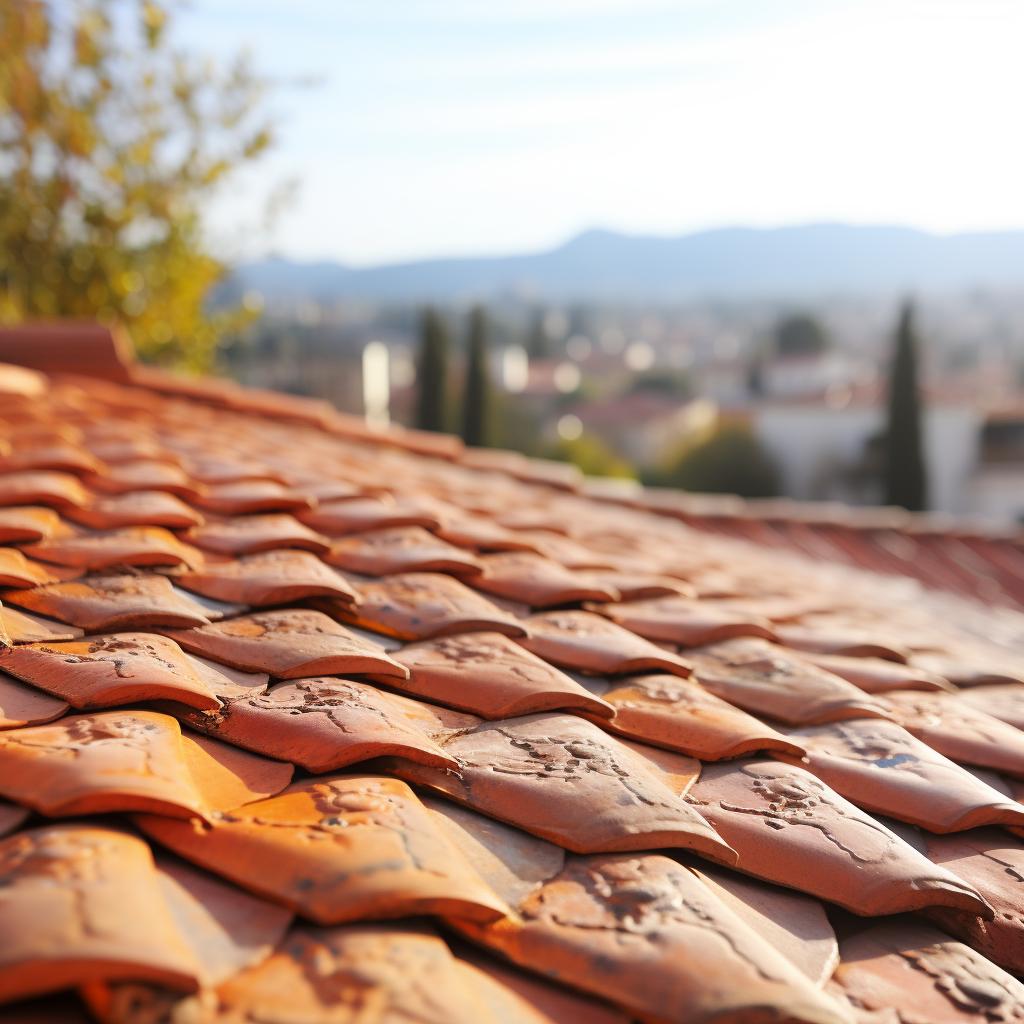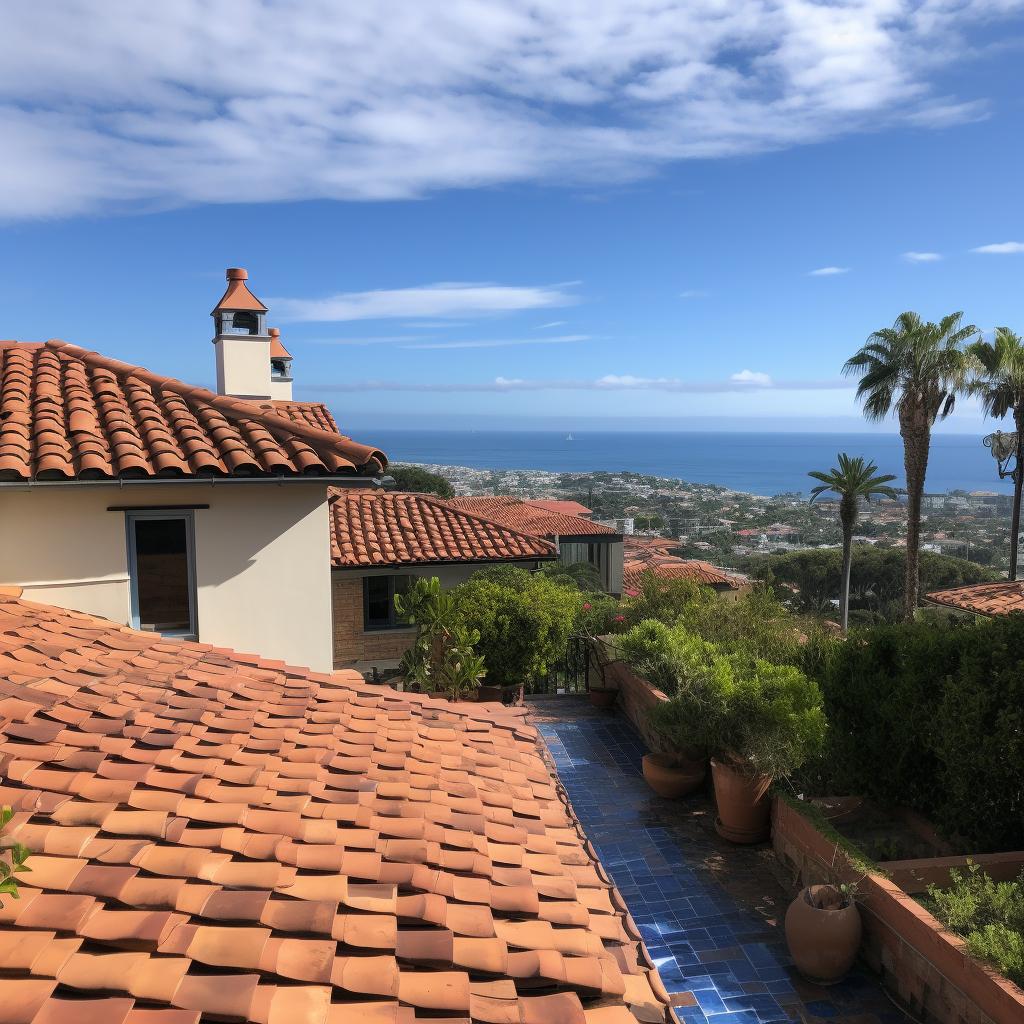When it comes to the safety and security of your home, few elements play a more crucial role than your roof. A solid and well-maintained roof provides essential protection from the harsh Canadian elements, safeguarding everything beneath it.
Yet, beneath the apparent tranquility of a sturdy structure could hide insidious flaws that threaten this protection-flaws that can lead to substantial repair bills if left unaddressed. Ontario best roofing specialists understand all too well how easily homeowners can overlook these potential issues.
In many cases, these unseen deficiencies silently develop over time, becoming significant problems only noticeable when damage has already been done. From the smallest crack in a shingle to an imperceptible leak in the underlayment, each overlooked detail has the power to compromise not just the integrity of your roof but also your comfort and bank account.
This article seeks to shed light on what you might miss during casual inspections and emphasizes the importance of professional expertise when dealing with such hidden threats.
Our focus is on providing guidance directly from seasoned Ontario roofing specialists-those who spend their days identifying and rectifying these exact shortcomings on rooftops across the province. By setting forth this exploration into common yet easily missed roofing defects, we aim to arm homeowners with knowledge and preventive strategies against these silent adversaries.
After all, understanding what can go wrong is the first step toward ensuring it doesn’t-in turn keeping your roofing costs manageable while extending the life of your home’s first line of defense against nature’s challenges.
The Hidden Culprits
Roofing flaws that escape the notice of homeowners can start off as minor inconveniences but can quickly escalate into major issues that carry hefty repair costs. One such problem is small leaks that go undetected.
These tiny breaches in a roof’s armor may seem insignificant, but over time, they can lead to rot, mold, and even structural damage. Once water has found its way inside, it’s not just the attic or the immediate ceiling area that’s at risk; moisture can seep further into your home causing damage to walls, insulation, ceilings, and electrical systems.
Real-life examples abound in which minor unnoticed issues resulted in significant expenses for unsuspecting homeowners. In one instance in Ontario, a small undetected leak around a chimney led to extensive damage to the roof decking and interior drywall requiring thousands of dollars to repair. The problem had been compounded by freezing winter temperatures that turned trapped water into ice, subsequently widening gaps and exacerbating leaks – a pattern not unfamiliar to residents accustomed to cold climates.
Preventive maintenance plays an essential role in mitigating such consequences before they become more severe. However, many homeowners omit inspections following extreme weather conditions like heavy snowfall or high winds that are capable of dislodging roofing material unbeknownst to them.
Another contributing factor is property aging; roofs tend toward more vulnerabilities as materials expand and contract with fluctuations in temperature over the years. When elements like these contribute to unseen roof deterioration, the inconspicuous nature of these flaws makes routine professional inspection all the more critical.
| Common Roofing Issue | Potential Consequence if Unaddressed |
|---|---|
| Minor Leaks | Structural Damage & Mold Growth |
| Damaged Shingles | Interior Water Damage & Insulation Deterioration |
| Improper Ventilation | Inadequate Attic Climate Control & Premature Roof Aging |
| Clogged Gutters | Flooded Basement & Weakened Foundation Walls |
The importance of recognizing these hidden culprits cannot be overstated when considering both their immediate and long-term repercussions on your home’s integrity and your wallet. Seeking advice from reputable services like Ontario Best Roofing can provide insightful solutions for preserving your roofing structure effectively.
Water Damage
Water intrusion is often a silent invader, sneaking into the crevices of your roof and causing harm that isn’t immediately apparent. This menace can gradually undermine the structural integrity of not only the roof but also the entire home.
When it comes to this type of damage, its stealth is what makes water particularly dangerous; by the time a homeowner notices signs such as stains on ceilings or peeling paint, the problem has likely been present for some time. Poor drainage systems, cracked shingles, and damaged flashing are just a few ways water finds its path into your home.
Ensuring your roof is well-equipped to fend off water begins with proper installation and timely maintenance. An Ontario best roofing contractor will emphasize the importance of expertly installed materials that align with regional weather patterns and potential environmental challenges. Here’s what needs to be done to prevent water damage:
- Ensure gutters are cleaned regularly to prevent blockages that cause overflow.
- Inspect areas where vents and chimneys penetrate the roof, as these are common sites for leaks.
- Check for missing, curled, or cracked shingles which can allow water entry.
- Look out for any sagging or uneven lines along the roof’s surface, indicating trapped moisture or deteriorated decking.
Some telltale signs point to an increased risk of water damage on your roof. Noticing moss or algae growth suggests persistent moisture levels that could degrade roofing materials over time.
If you spot granules from asphalt shingles accumulating in gutters or at downspouts, it could mean your shingles are near their life’s end and may no longer repel water effectively. Moreover, when you see dampness in your attic or light peeking through roof boards during daytime inspections-these are urgent indicators of vulnerability that require immediate attention before further damage ensues.
Addressing these concerns promptly can prevent minor issues from escalating into major disasters involving extensive repairs-or worse yet-a complete roof replacement. By recognizing these symptoms early and taking immediate action, homeowners can protect their homes from one of nature’s most relentless forces: water damage.
Regular maintenance checks by reputable professionals play an indispensable role in preserving a healthy roof over an Ontario residence because they ensure small damages are caught and repaired quickly. These specialists have tools like moisture meters that detect hidden wet spots within roofing structures before they become visible to unaided eyes.

Homeowners should inquire about these types of diagnostic evaluations during regular inspection visits-and always after severe weather events-to maintain confidence in their roofs’ ability to withstand whatever comes next seasonally in Ontario’s dynamic climate.
Ontario Best Roofing Insights
When it comes to regular inspection and maintenance of your roof, experts from Ontario Best Roofing agree that vigilance is key. Performing routine checks is an essential part of home upkeep that can circumvent costly repairs down the line.
By scheduling bi-annual inspections-preferably in the spring and fall-you ensure that your roof is prepared for the harsh weather conditions typical in Ontario. A professional can identify issues such as cracked or missing shingles, clogged gutters, and compromised flashing that may not be visible to the untrained eye.
One critical factor to bear in mind is the age of your roof; older roofs require more frequent monitoring as they are more susceptible to wear and tear. Trained specialists can assess the extent of any damage and provide actionable advice on repairs or if a replacement is necessary. It’s also important for homeowners to be proactive.
After severe weather events, even if your roof isn’t leaking, it’s advisable to conduct a visual inspection from the ground or contact a professional if you suspect damage. Taking such preventative measures after storms can save homeowners considerable expense by catching minor damages before they evolve into larger problems.
Homeowners should consider creating a seasonal maintenance checklist based on expert recommendations. This list could include cleaning out gutters, checking for algae or moss growth which could suggest moisture retention, inspecting for damaged shingles, ensuring proper attic insulation and ventilation, and removing debris from the roof surface.
Enlisting an Ontario Best Roofing specialist for a detailed assessment might reveal hidden flaws like subtle sagging or inadequate sealing around vents and chimneys-issues that could lead to significant internal home damage if left unaddressed.
| Season | Key Maintenance Actions |
|---|---|
| Spring | Clean gutters; inspect shingles; check for winter damage. |
| Summer | Look for signs of heat damage; ensure proper ventilation. |
| Fall | Clean gutters (again); remove debris; prepare for winter conditions. |
| Winter | Mild-weather inspections; address ice damming immediately if present. |
Routine inspections act as an ounce of prevention in protecting one’s home investment-reminding us that maintaining a robust roof is paramount when guarding against elemental exposure unique to Ontario’s climate.
The Ventilation Problem
Understanding the importance of roof ventilation cannot be overstated. Just like living beings need to breathe, a roof requires proper air circulation to function efficiently and prolong its lifespan. Many homeowners neglect this critical aspect of roofing, which can have detrimental consequences.
Significance of Roof Ventilation
Proper ventilation in a roof is essential for regulating the temperature and moisture levels in the attic space. During the hot summer months, a well-ventilated roof allows heat to escape, which helps prevent the buildup of oppressive heat under the roof. This ultimately leads to more comfortable living conditions inside the home and reduces the strain on air conditioning systems.
Conversely, during colder seasons, effective ventilation prevents the accumulation of moist air that can condensate and potentially cause water damage or mold growth on wooden structures. Moreover, it’s imperative for preventing ice damming on roofs which can lead to extensive structural damage.
In addition to these temperature-related benefits, adequate roof ventilation also plays a crucial role in preserving shingles. The excessive heat trapped in an unventilated attic can prematurely age roofing shingles from beneath. As an Ontario roofing specialist would advise, ensuring your roof has appropriate ventilation could extend the overall life expectancy of your roofing materials.
Common Ventilation Mistakes
It’s not uncommon for homes-even those featuring ontario best roofing materials-to suffer from improper ventilation due to design oversights or installation errors. A common misconception among homeowners is that their roofs are already adequately ventilated when that may not be true. Some signs of poor ventilation include consistently high energy bills (indicative of overworked HVAC systems due to improper attic temperatures), irregular temperatures across rooms in your home, or visibly damaged shingles.
Another oversight is assuming all vents provide equal benefits; however, without balanced intake and exhaust vents working harmoniously throughout your roof and attic spaces, you will likely experience uneven airflow distribution which compromises efficiency.
Ventilation Solutions
Addressing inadequate ventilation begins with a thorough evaluation by skilled professionals who understand local roofing challenges and environmental nuances unique to Ontario’s climate. These specialists can install additional vents or upgrade existing ones as needed while ensuring they integrate correctly with other components such as soffits and ridge vents.
Modern solutions for improving roof ventilation might include turbine vents that actively expel hot air on windier days or various types of static vent systems that facilitate continuous air flow even without significant wind presence. For complex cases where standard vent installations aren’t viable due to architectural limitations-new technologies such as powered attic ventilators (PAVs) may be employed-evidently these should always be considered alongside proper insulation strategies for maximum efficacy.
Shingles and Flashing
Recognizing Shingle Damage
Shingles serve as the first line of defense against the elements, protecting your home from rain, snow, and the blistering sun. However, their exposure to harsh weather conditions can lead to deterioration over time. Small cracks or curling shingles might seem like a cosmetic issue at first glance, but they can escalate into severe leaks if not addressed promptly.
The Ontario best roofing specialists often highlight that discoloration, granule loss, and missing shingles are early warning signs that should not be ignored. Homeowners need to remember that even tiny gaps left by damaged shingles can allow water to seep in and compromise the underlayment, leading to more extensive internal damage.

Flashing Failures: A Sneaky Source of Leaks
Flashing is designed to create a water-resistant barrier around areas where the roof meets vertical surfaces such as walls and chimneys or at roof joints like ridges and valleys. It’s typically made of metal or a waterproof material which over time can degrade or become dislodged due to settling structures or extreme weather events.
Faulty flashing is notorious for being an unseen cause of water infiltration because it often goes unnoticed until telltale stains appear on ceilings or walls indoors. Ontario roofing experts caution that improper installation of flashing during initial roof construction can also set the stage for future leaks; hence why it’s imperative to inspect these areas regularly.
Selecting Materials Suited for Ontario’s Climate
Choosing quality shingles and flashing materials is essential for ensuring that your home remains watertight and energy-efficient throughout the diverse Ontario weather conditions. When selecting roofing materials, homeowners should consult with local specialists who understand how different products perform in extreme cold, heat, humidity, and wind. High-quality materials may come at a higher upfront cost but choosing durable options will prevent frequent repairs caused by substandard alternatives wearing out quickly.
Specially manufactured shingles resistant to algae growth and UV damage are just one example of products tailored for longevity in a climate like Ontario’s. Installing ice-and-water shields along with robust flashing offers additional protection against ice dams and heavy snowfalls common in Canadian winters – factors crucial in maintaining a reliable roofing system year-round.
The True Cost of Ignoring Minor Roofing Issues
It’s a common perception among homeowners that minor roofing issues can be put off until they grow into more apparent problems. However, this delay can prove to be a costly mistake.
Small issues such as a missing shingle, a slight curve in the roofline, or a barely noticeable leak might seem insignificant initially but have the potential to snowball into larger concerns requiring extensive repair or even complete replacement of the roof. Ontario’s best roofing professionals stress the importance of not underestimating these seemingly trivial defects, as they are often early indicators of underlying problems that can affect the structural integrity and safety of your home.
The financial implications of ignoring minor roofing repairs are significant when compared to proactive maintenance. The cost of repairing a small area of damage might be manageable; however, if left unattended, water infiltration and other consequences of neglected flaws can lead to extensive damage not only to the roof but also potentially impacting ceilings, walls, and even the foundation of your home.
The expenses associated with these comprehensive repairs can dwarf what it would cost had the issue been addressed promptly. Moreover, during peak seasons when roofing services are in high demand, prices for repairs can surge due to increased labor costs and material demand.
Homeowner testimonies further illuminate the pitfalls of delaying essential roof maintenance. Individuals who disregarded early signs like dark spots on ceilings or missing granules from shingles often faced staggering bills after intense weather events exposed the true extent of their roof’s vulnerability.
These real-life examples serve as compelling evidence that investing in regular check-ups by reputable experts will pay off in identifying small defects before they balloon into financial burdens. By choosing preventative over reactive measures when it comes to maintaining one’s roof, homeowners stand a greater chance at minimizing costs and avoiding unwelcome surprises that strike both their peace of mind and their wallets.
How to Choose a Reliable Roofing Specialist in Ontario
Choosing the right roofing specialist is crucial to ensuring that any potential or existing roofing issues are properly addressed. With so many companies claiming to be the best, it can be overwhelming when it comes to selecting a service provider.
Start by researching local roofing experts with a strong community presence and a verified track record for quality work. Ontario best roofing services will typically have ample positive reviews from satisfied customers, as well as evidence of successfully completed projects similar in scope and complexity to yours.
One of the first attributes to look for when choosing a reliable roofing specialist is their licensing status. In Ontario, reputable contractors should have the necessary licenses that certify them to perform roof repairs and installations according to provincial standards. Additionally, check for adequate insurance coverage including liability insurance and worker’s compensation, which protects you as a homeowner in case an accident occurs on your property during the job.
Experience and expertise are also key factors in finding a trustworthy specialist. An experienced roofer will not only offer repair services but will also provide insightful assessments to prevent future issues from arising.
Look for professionals who come recommended by industry associations or have specialized credentials that demonstrate ongoing education and adherence to state-of-the-art practices in roofing technology and materials. By asking these questions before hiring, you ensure that your chosen specialist has the qualifications necessary to effectively identify and remediate any hidden flaws within your home’s roof system.
Implementing a Long-Term Roofing Strategy
Implementing a proactive long-term roofing strategy is not just about attending to immediate repairs; it’s an investment in the future of your home. With continual upkeep, timely upgrades, and proper insulation, homeowners can significantly extend their roof’s lifespan while also enhancing its functionality and energy efficiency. Considering the variable climate in Ontario, taking these steps is essential for safeguarding what is undoubtedly one of the most critical components of your home.
Roof upkeep goes beyond dealing with obvious issues like leaks or missing shingles; it includes regular cleaning of gutters, downspouts, and removal of debris from the roof surface. Preventative maintenance should ideally be scheduled to follow the changing seasons, addressing specific challenges that each brings.
Before harsh winter conditions set in, for instance, ensuring that ice damming won’t occur due to clogged gutters is vital. Conversely, after winter’s thaw, inspecting for any damage caused by heavy snowfall or ice can help catch minor problems before they become more significant.

Insulation plays a dual role in roof longevity as well as interior climate control. Proper attic insulation can prevent heat loss during Ontario’s cold winters, reducing the burden on heating systems and lowering energy costs.
Meanwhile, during hotter months it can keep excessive heat out of living spaces thus preventing overheating and strain on air conditioning units. Furthermore, good insulation helps maintain consistent roof temperatures which means less expansion and contraction due to temperature fluctuations – leading to reduced stress on roofing materials.
The need to upgrade a roof should not always be viewed through the lens of repair only but also as an opportunity for improvement. When integrating new technologies or materials that have come to market since your last roofing update could prove beneficial against Ontario’s harsh weather conditions offering superior durability or better thermal properties-which are paramount considerations when aiming for ontario best roofing practices-the long-term savings and improved protection are worth considering.
Each aspect from inspection and maintenance to insulation contributes towards laying down a solid defense against both visible damages and those insidious hidden flaws waiting to balloon into costlier headaches if left unchecked. Engaging with trusted professionals will ensure these strategies are implemented correctly providing peace-of-mind while bolstering your home’s defense against whatever elements mother nature delivers.
Conclusion
The importance of maintaining a structurally sound and flaw-free roof cannot be overstated, especially given the varied and often harsh climate conditions in Ontario. As we have seen, hidden roofing flaws are insidious; they can quietly undermine the integrity of your home and lead to substantial financial losses over time. Expert roofing specialists continuously stress the gravity of taking preemptive measures to keep these issues at bay, and as Ontario homeowners, it is crucial to heed their advice.
The expertise provided by Ontario best roofing professionals indicates that consistent inspections and routine maintenance are foundational in preserving a roof’s longevity. Not only does regular check-up save money in the long run, but it also offers peace of mind knowing that one of your most significant investments-your home-is protected against unexpected deterioration. Implementing effective strategies for upkeep, including proper insulation and timely upgrades, further strengthens a roof’s defense against natural wear and tear.
Closing this discussion, there should now be an understanding that addressing hidden roofing flaws is not merely a recommendation but an essential practice for responsible homeownership. By fostering vigilance through seasonal maintenance checklists and ensuring proper ventilation and material selection suited for Ontario’s climatic demands, you can safeguard against both visible and unseen threats to your roofing system’s stability.
Remember that collaboration with trusted specialists is key; these seasoned experts are invaluable allies in protecting your greatest asset. So take action-assessing your roof now could prevent unwelcome surprises later down the road while reinforcing the safety and comfort of your living space for years to come.
Frequently Asked Questions
How to Choose a Roofer Ontario?
When choosing a roofer in Ontario, one should consider several factors to ensure quality service and reliability. It’s essential to select a licensed and insured contractor with good reviews or recommendations from past clients.
Experience is also critical, so seeking out roofers who have worked on similar projects and roofs is key. Additionally, obtaining detailed quotes that outline the scope of work, materials to be used, warranty information, and timelines can help in making an informed decision.
Who Is the Largest Roofing Manufacturer in North America?
GAF Materials Corporation holds the title of being the largest roofing manufacturer in North America. They are known for their wide range of products including shingles, roof ventilation systems, and other roofing materials.
How Long Does a Roof Last in Canada?
The lifespan of a roof in Canada varies depending on the material used and the external conditions it faces such as weather; however, most roofs last between 15 to 30 years. Asphalt shingles are common and typically last anywhere from 15 to 20 years; metal roofs can often surpass 30 years with proper maintenance.
What Is the Most Expensive Part of a New Roof?
The most expensive part of a new roof is typically the roofing material itself. The cost can vary widely depending on what type of shingles or covering is chosen, such as standard asphalt shingles or more premium options like slate tiles or metal roofing.
How Big Is the Roof on a 2000 Sq Ft House?
The size of a roof on a 2000 sq ft house doesn’t directly correlate to the home’s square footage because it depends on the pitch (slope) of the roof and any additional features such as dormers or valleys.
A simple gable roof might have roughly similar square footage to the house floor plan area while a more complex design will increase that figure due to its geometry.
How Many Squares Does It Take to Roof a 2000 Square Foot Home?
Roofing projects are measured in ‘squares,’ where one square equals 100 square feet of roofing area. To cover a home with 2000 square feet of living space may require more squares due to overhangs and pitch considerations, but usually falls in the range of 20-30 squares for typical designs.
How Do You Calculate Roof Cost?
Calculating roof cost involves several variables including size measured by squares (100 sq ft), types of materials selected for shingles or panels, labor costs for installation, removal fees for old materials if necessary, dumpster rental for debris disposal along with permits or inspections fees mandated by local regulations—and any additional repair work needed for underlayers or framing support which occasionally surfaces during an inspection prior to initiating replacement procedures.
How Many Squares Is a 2000 Foot Roof?
As previously described under question number six regarding ‘squares’ needed for roofing project calculation purposes—one cannot provide an exact match in terms without considering design intricacies; nonetheless generally speaking about 20 squares would be required assuming each square represents approximate measurement calculation basis regardless whether accurate determination actually ranges slightly higher when precise assessments factor into overall equation depending upon specific structural aspects related towards every unique situation encountered during job assessment process stages involved thereof.


